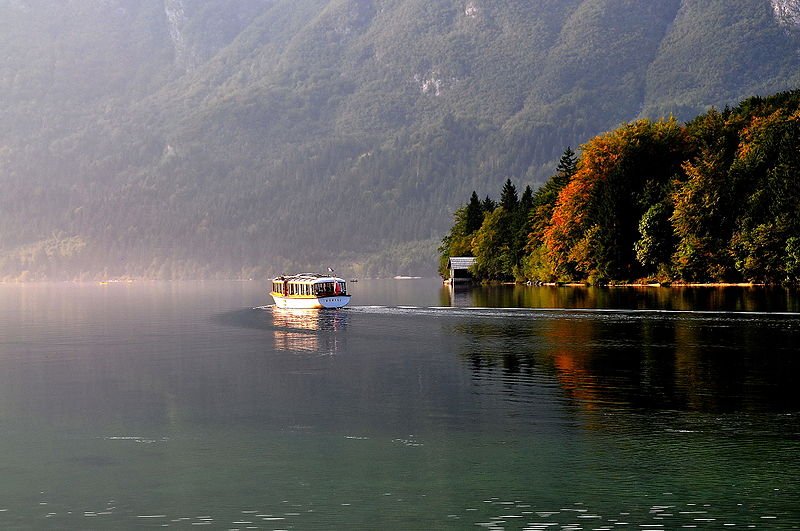 Boat on Lake Bohinj in the Upper Carniola, Slovenia
Boat on Lake Bohinj in the Upper Carniola, SloveniaSource: https://commons.wikimedia.org/wiki/File:Bohinjsko_jezero_Oberkrain_Slowenien_20092009_67.jpg
Author: Johann Jaritz

Slovenia is a small country in Central Europe, one of those that broke off from Yugoslavia in 1991. Covering 20,273 sq km (7,827 sq mi), it is bordered by Croatia to the south and east, Italy to the west, Austria to the north, and Hungary to the northeast. Slovenia enjoys a short stretch of coastline along the Adriatic Sea.
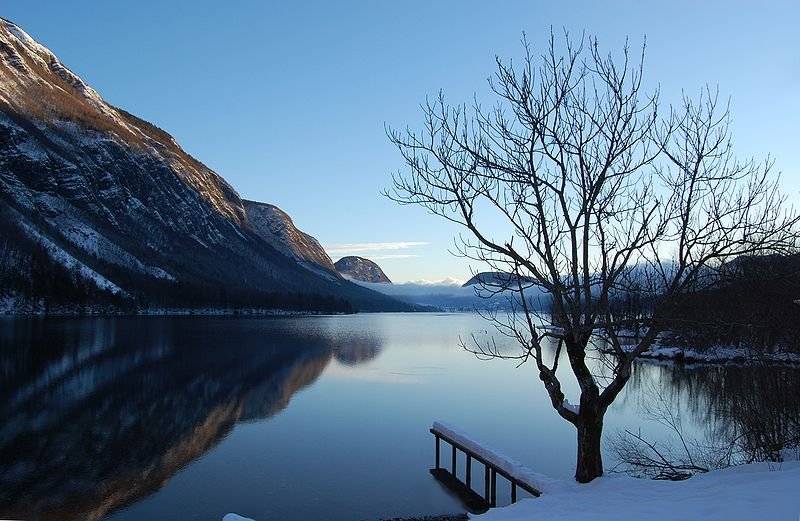 Bohinj Lake, Triglav National Park, Slovenia
Bohinj Lake, Triglav National Park, SloveniaSource: https://commons.wikimedia.org/wiki/File:Bohinjsko_jezero_2.jpg
Author: Smihael

Slovenia has a population of slightly over two million. Its capital and largest city is Ljubljana. The official language is known as Slovene. Ethnic Slovene forms some 83% of the country's population. The government of Slovenia is a parliamentary republic headed by a president and a prime minister.
Slovenia observes Central European Time, which is an hour ahead of Coordinated Universal Time (UTC+1), and two hours ahead in summer. Traffic is driven on the right here. The phone IDD code is +386. The electricity is 230V/50Hz using European plug.
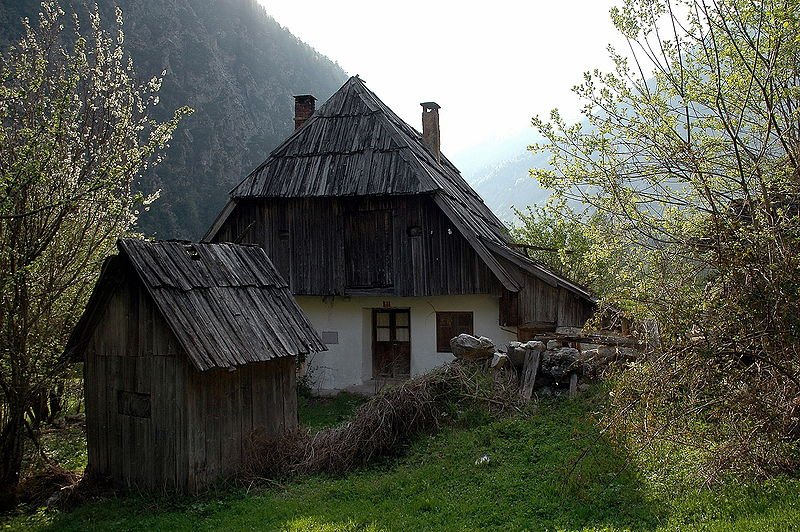 Traditional farmhouse in Trenta, Slovenia
Traditional farmhouse in Trenta, SloveniaSource: https://commons.wikimedia.org/wiki/File:Bauernhaus_Trenta_06052006_21.jpg
Author: Johann Jaritz

Slovenia adopts the Euro as its official currency. It is today the richest Slavic nation-state. In 2010, it had an estimated nominal GDP of $46.442 billion, and a per capital nominal GDP of $23,009. Its per capita GDP at purchasing power parity was $27,900.
One half of Slovenia is still forested. Its highest peak is Mount Triglav, which is 2,864 m (9,396 ft). The Alps dominate the northern part of Slovenia, forming the border between the country and Austria.
Slovenia traces its historical identity to the 16th century, when the first books in the Slovene language was written. Those early books were Protestant Bible teaching. The faith was however suppressed in the 17th century by the Habsburg-sponsored Counter Reformation.
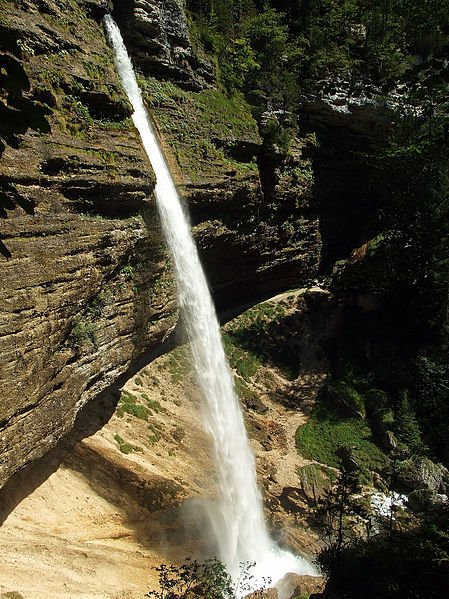 Peričnik Waterfall, Slovenia
Peričnik Waterfall, SloveniaSource: https://commons.wikimedia.org/wiki/File:Peri%C4%8Dnik_waterfall.jpg
Author: ufoncz

Slovenia was under the Austrian Habsburg Empire until the Napoleonic Wars, when it was ruled by the French, albeit briefly, between 1809 and 1813, before returning to Austrian rule. Nationalistic sentiments began with a developing interest in the Slovene language from the 1820's. In 1848, the Slovenes were demanding an autonomous kingdom within the Austrian Empire.
Some 300,000 Slovenes emigrated to other countries around the turn of the 20th century, moving to the United States, South America, Germany, Egypt and neighboring cities wsithin the Austro-Hungarian Empire such as Zagreb and Vienna.
World War I brought the dissolution of the Austro-Hungarian Empire. Breaking away, the Slovenes, Croats and Serbs formed the State of Slovenes, Croats and Serbs in 1918, which eight years later was renamed Yugoslavia.
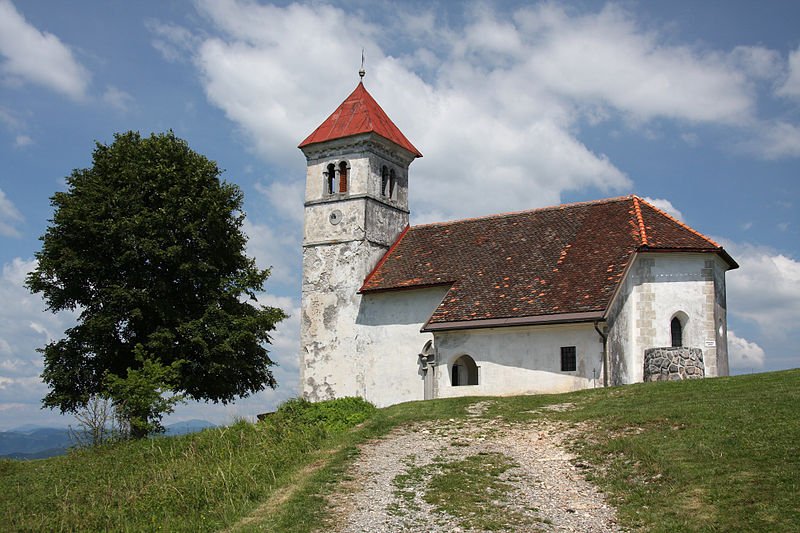 St Ana Church, on hill above Podpeč, Slovenia
St Ana Church, on hill above Podpeč, SloveniaSource: https://commons.wikimedia.org/wiki/File:Sv_Ana.jpg
Author: Yerpo

Yugoslavia was initially a kingdom. It was invaded by the Axis Powers during World War II, and after the war, was reestablished as a socialist state, the Federal Yugoslavia. By the late 1980's, there was a strong movement in Slovenia towards democracy, predating the collapse of the Soviet Union.
On 25 June 1991 Slovenia declared independence, and was immediately attacked by Yugoslav army, sparking the Ten-Day War. The European Union recognized Slovenia in January 1992, and the United Nations accepted its membership in May. Slovenia gained membership of the European union in 2004, the same year it joined NATO. On 1 January 2007 Slovenia became the first transition country to meet the criteria to join the Eurozone.
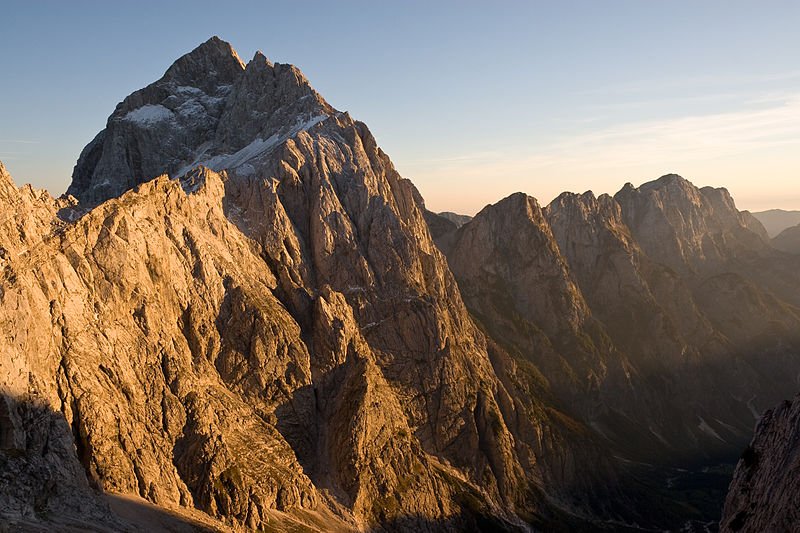 North face of Mount Jalovec in the Julian Alps, Slovenia
North face of Mount Jalovec in the Julian Alps, SloveniaSource: https://commons.wikimedia.org/wiki/File:Jalovec_northside_MC.jpg
Author: Christian Mehlführer

Preparing Money for Slovenia
The currency used in Slovenia is the Euro (EUR).Planning your visit to Slovenia
Slovenia is a member of the Schengen Agreement. Therefore, visitors from EU and EFTA countries only need to carry an approved ID card to gain entry. There is no border control for citizens of the European Union (except Bulgaria, Cyprus, Ireland, Romania and the United Kingdom), Iceland, Norway and Switzerland.As of January 2011, you do not need a visa for entering Slovenia or any other Schengen member country if you are a citizen of Albania, Andorra, Antigua and Barbuda, Argentina, Australia, Bahamas, Barbados, Bosnia and Herzegovina, Brazil, Brunei, Canada, Chile, Costa Rica, Croatia, El Salvador, Guatemala, Honduras, Hong Kong, Israel, Japan, Macau, Malaysia, Mauritius, Mexico, Monaco, New Zealand, Nicaragua, Panama, Paraguay, Saint Kitts and Nevis, San Marino, Seychelles, Singapore, South Korea, Taiwan, United States, Uruguay, Vatican City, and Venezuela.
Ljubljana Jože Pučnik Airport is the main airport serving Slovenia. It is located about 19km (12 mi) north of Ljubljana. The airport is the homebase of the Slovenian flag carrier Adria Airways. EasyJet and Vueling Airlines provide low-cost flights between Ljubljana and selected destinations including London-Stansted, Paris-Charles de Gaulle and Barcelona.
Recommended Travel Guidebook
My favorite travel guidebook for further reading in preparation of your trip is the Slovenia Eyewitness Guide, because it follows a format that I find useful to users, not to mention I have also contributed to some of the titles in the Eyewitness series of guidebooks.Major Cities in Slovenia
Places of Interest in Slovenia
- Triglav National Park
 Latest updates on Penang Travel Tips
Latest updates on Penang Travel Tips
 Discover with Timothy YouTube Channel
Discover with Timothy YouTube Channel
 PG Food Channel
PG Food Channel
 Learn Penang Hokkien YouTube Channel
Learn Penang Hokkien YouTube Channel
 SojiMart Videos
SojiMart Videos
Latest from Discover with Timothy: Gurney Bay - what to see and do there
About this website

Hello and thanks for reading this page. My name is Timothy and my hobby is in describing places so that I can share the information with the general public. My website has become the go to site for a lot of people including students, teachers, journalists, etc. whenever they seek information on places, particularly those in Malaysia and Singapore. I have been doing this since 5 January 2003, for over twenty years already. You can read about me at Discover Timothy. By now I have compiled information on thousands of places, mostly in Peninsular Malaysia and Singapore, and I continue to add more almost every day. My goal is to describe every street in every town in Malaysia and Singapore.
Robbie's Roadmap
- Episode 1: Robbie's Journey to Financial Freedom
- Episode 2: Lost in America
- Episode 3: The Value of Money
- Episode 4: The Mentor
- Episode 5: The Thing that Makes Money
- Episode 6: The walk with a Billionaire
- Episode 7: The Financial Freedom Awakening
- Episode 8: Meet Mr Washington
- Episode 9: The Pizzeria Incident
Copyright © 2003-2024 Timothy Tye. All Rights Reserved.


 Go Back
Go Back